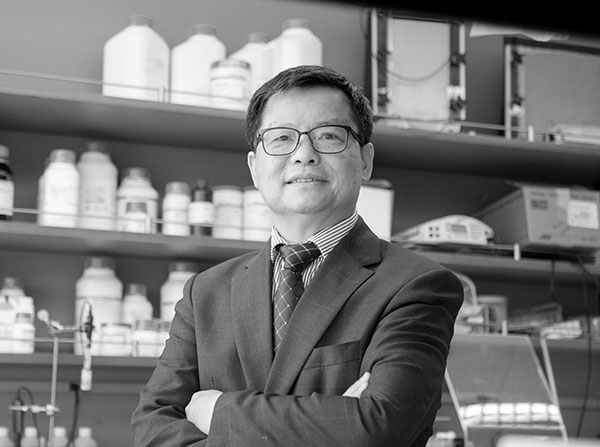
Guo-Min Li, PhD
For more than 20 years, Guo-Min Li has conducted research and advanced the field of DNA mismatch repair, earning an international reputation for his discoveries in the specialized arena. He started mismatch repair research when he was a postdoctoral fellow in the lab of Paul Modrich, PhD, the James B. Duke professor in the Department of Biochemistry in the Duke University Medical Center, who recently was awarded the 2015 Nobel Prize in Chemistry for his work uncovering the mechanism of DNA mismatch repair and its link with cancer.
In a brief conversation, Li, a professor in the Department of Biochemistry and Molecular Biology, talked about how the DNA repair system is integral to maintaining our health — and how he is working toward using that system to cure cancer.
What got you interested in DNA mismatch repair?
In my PhD work, I was working on chemicals, like environmental carcinogens, that modify DNA and cause mutations. From there, I grew interested in the other side of that process: how cells prevent mutations. DNA mismatch repair is the pathways cells take to correct mistakes during cell division. So for my postdoctorate, I researched who was top in the field, then applied for a spot in the lab of Dr. Paul Modrich at Duke University.
How do cell mutations and defects in DNA repair cause cancer?
A cell copies its genetic material into daughter cells during the division process, and this process frequently makes mistakes, which can occur in many disease-controlling genes such as tumor suppressors. Humans have a system called DNA mismatch repair that recognizes any mistake the cell made during the duplication process and then repairs it. Individuals lacking this repair system, either due to genetic inheritance or gene alterations acquired later in their lives, from taking X-rays and/or exposure to ultraviolet rays in sunshine, are unable to correct these mistakes and will develop various cancers.
Where will researchers take these findings in future work?
DNA mismatch repair won the Nobel Prize because of Dr. Modrich’s finding that defects in this repair system cause cancer. But in addition to knowing how this mechanism causes cancer, now we know that there is a way to use this mechanism to cure cancer. That’s my goal here.